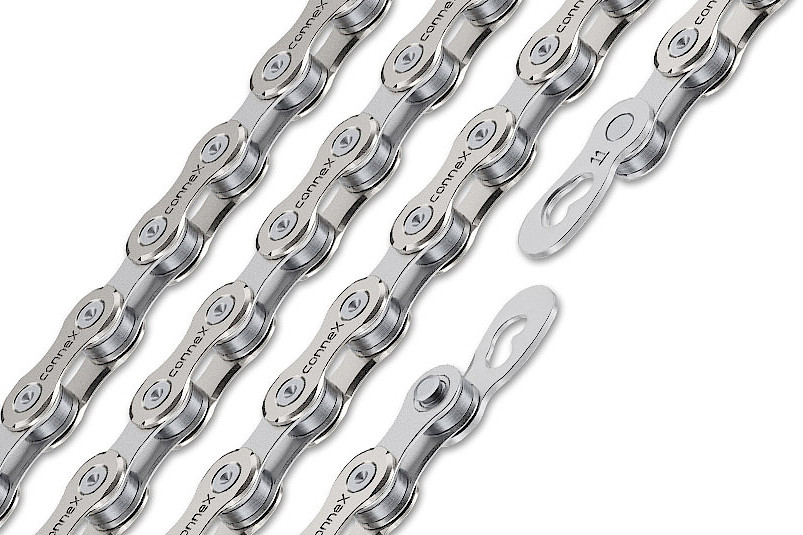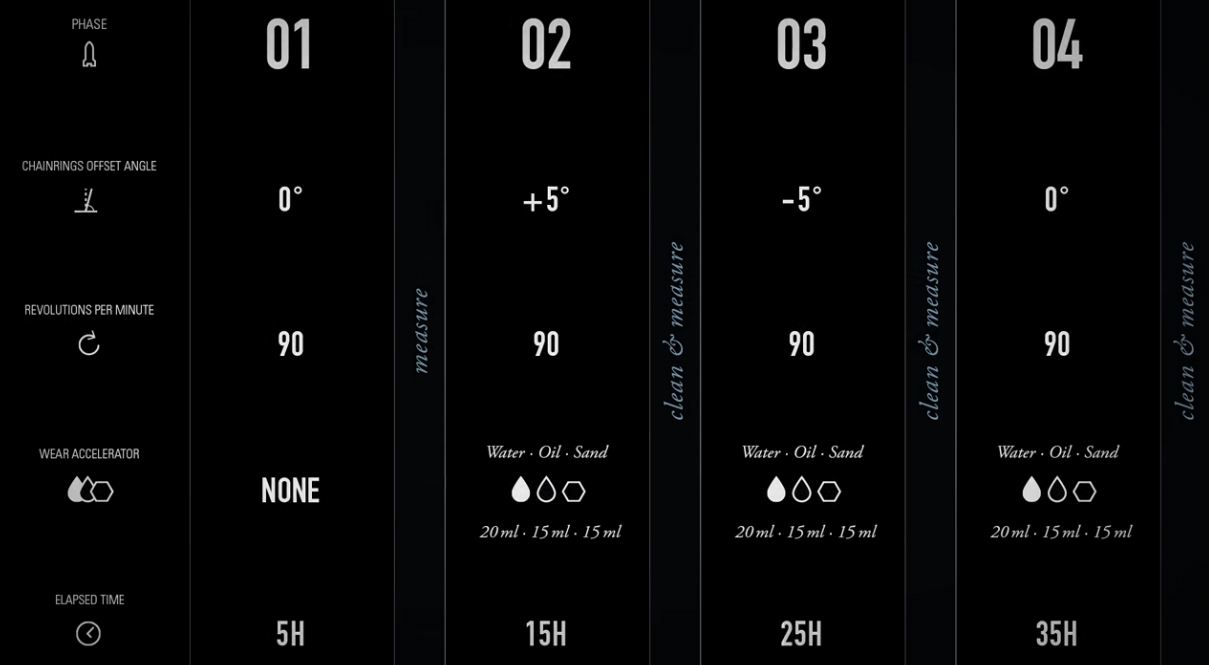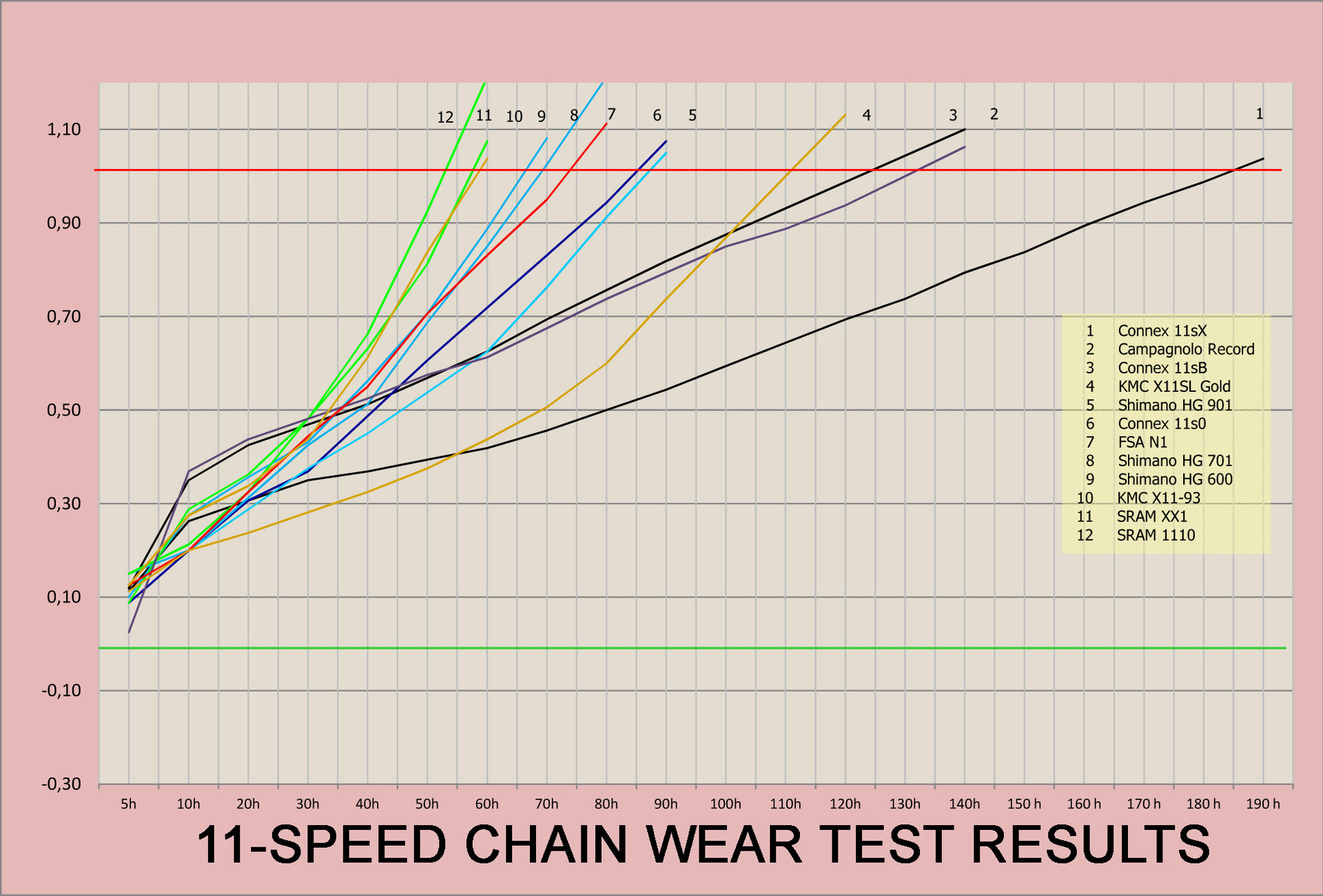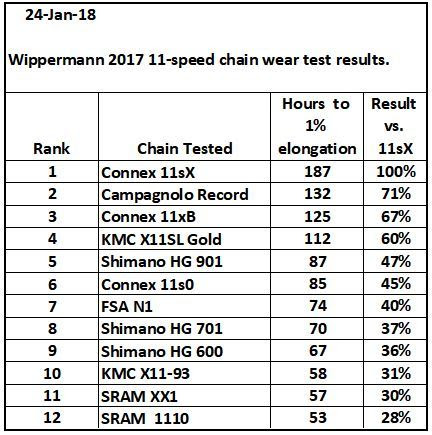One of the best ways to quickly ruin expensive drivetrain parts is to keep pedaling with a worn chain. Most manufacturers agree that once a chain reaches 1% elongation, it’s considered worn out. Continuing to use the chain past that point will typically destroy cassettes and chainrings and lead to skipping if you install a new chain. So the longer it takes for a chain to reach 1% elongation, the better, right?
That’s what Wippermann is hoping to highlight with their latest chain wear test. Obviously, any test run by a manufacturer that claims their own product is best has to be viewed with a bit of skepticism, but Wippermann’s test does seem pretty thorough. The test protocol involves a run in period, then various degrees of offset chain angle, oil, water, and sand additions for wear accelerators, and a 600 N load.
After running the test and then running each chain to 1% stretch, the results are as shown above. Not surprisingly, the Wippermann Connex 11SX chain tested the best, but the Campagnolo Record, KMC X11SL Gold, and Shimano HG 901 were up there too. Obviously, the test says nothing about quality of shifting – only outright durability. If anything though, the test does show that higher end chains often do offer better durability.
The winning chain, the Connex 11SX is a stainless steel chain with a nickel coating and Connex Link that is compatible with all 11 speed road and mountain bike drivetrains and is available from outfits like Cantitoe Road for $89.96.



